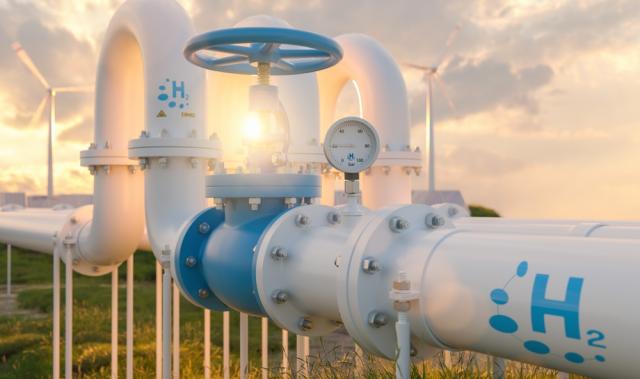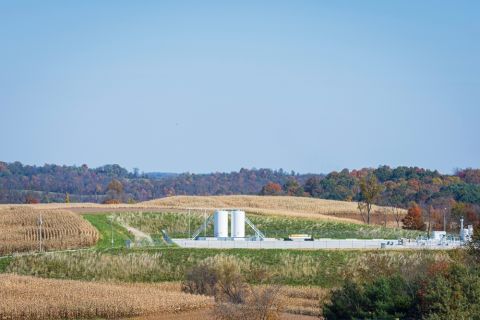
DNV's H2Pipe project is developing a new standard code for offshore hydrogen pipelines, addressing safety and cost-efficiency concerns for the transportation of pure hydrogen and as an additive to natural gas. (Source: Shutterstock)
DNV is launching the second phase of its joint industry project H2Pipe to develop a new standard code for offshore hydrogen pipelines, DNV announced on Feb. 20 in a press release.
H2Pipe addresses safety and cost-efficiency concerns for the transportation of pure hydrogen and as an additive to natural gas.
The company predicts in its Hydrogen Forecast to 2050 that over 50% of hydrogen pipelines globally will be repurposed from natural gas pipeline networks already existing, which will cost less than 35% to build new, said DNV in the press release. DNV’s H2Pipe project is developing a standard for design and infrastructure assessments for hydrogen pipelines, as well as safety and pipeline integrity targets for an increased use of hydrogen in existing pipelines.
In 2021, DNV’s first phase of H2Pipe began, which looked into the degradation of steel pipe mechanical properties in order to prepare for Phase 2.
Phase 2 will involve an experimental test program and will begin in March 2023 and last two years. It will test hydrogen embrittlement mechanisms and the effects of hydrogen on the integrity of line pipe material, as well as include a feasibility level design of offshore hydrogen pipelines and a risk assessment study for safety. DNV will use Phase 2 results to create a guideline for the design and repurposing of offshore hydrogen pipelines.
“We invest in initiatives such as the FutureGrid Project at our Spadeadam Test Facility in the U.K. for the purpose of understanding how a gas transmission network will need to be developed and operated, to deliver sufficient quantities of hydrogen safely,” said DNV’s Prajeev Rasiah, Regional Director, Northern Europe, Energy Systems. “This [joint industry project] for offshore pipelines is another contribution in the move to decarbonize the energy system, and to ensure an efficient and safe hydrogen infrastructure.”
Hydrogen balances out power generation from variable renewable sources like wind and solar. According to DNV’s 2022 Hydrogen Forecast to 2050, in order to hit Paris Agreement targets, 15% of global energy demand must be hydrogen.
Recommended Reading
Athabasca Oil, Cenovus Energy Close Deal Creating Duvernay Pureplay
2024-02-08 - Athabasca Oil and Cenovus Energy plan to ramp up production from about 2,000 boe/d to 6,000 boe/d by 2025.
Analysts: Why Are Investors Snapping Up Gulfport Energy Stock?
2024-02-29 - Shares for Oklahoma City-based Gulfport Energy massively outperformed market peers over the past year—and analysts think the natural gas-weighted name has even more upside.
Uinta Basin's XCL Seeks FTC OK to Buy Altamont Energy
2024-03-07 - XCL Resources is seeking approval from the Federal Trade Commission to acquire fellow Utah producer Altamont Energy LLC.
SilverBow Saga: Investor Urges E&P to Take Kimmeridge Deal
2024-03-21 - Kimmeridge’s proposal to combine Eagle Ford players Kimmeridge Texas Gas (KTG) and SilverBow Resources is gaining support from another large investor.
CEO Darren Woods: What’s Driving Permian M&A for Exxon, Other E&Ps
2024-03-18 - Since acquiring XTO for $36 billion in 2010, Exxon Mobil has gotten better at drilling unconventional shale plays. But it needed Pioneer’s high-quality acreage to keep running in the Permian Basin, CEO Darren Woods said at CERAWeek by S&P Global.





